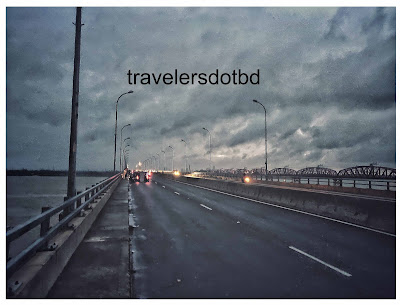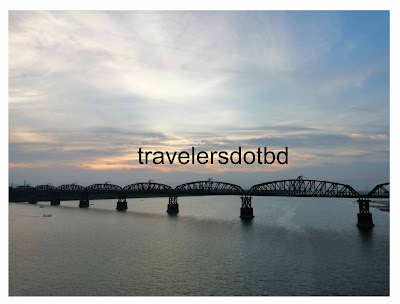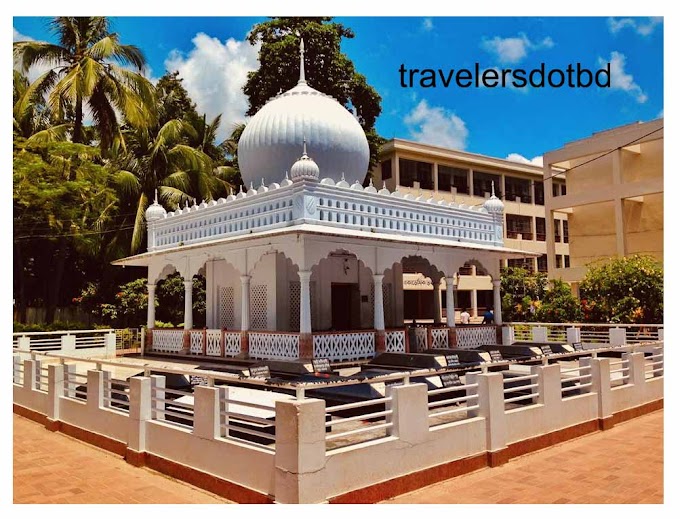Lalon Shah Bridge
Bheramara and Pakshi have become a wonderful cosmos for wandering at the gates of the southern town, which is surrounded by the unique beauty of nature in the lap of Padma. When you come here, Ruposhi fills your heart with the sound of the waves of the Padma, the green surroundings and the breeze. The area also has the Hardinge Bridge, the first and largest railway bridge in the country in the twentieth century and the Lalon Shah Bridge, the second largest in the country.
Above all, Bheramara, rich in relics of the war of liberation and independence, has become a beautiful tourist spot. One more place has been added to the list of places of interest in the country. Every day hundreds of thousands of visitors flock to both sides of Bheramara-Pakshi. Morning-afternoon feels like a reunion. It cannot be understood without seeing it with one's own eyes.
 |
| Lalon Shah Bridge |
One of the great achievements of Bheramara is the Lalon Shah Bridge on the south side of Hardinge Bridge. Similar to the Jamuna Bridge, Lalon Shah Bridge is the second largest road bridge in Bangladesh. The 1,786-meter-long and 7.5-meter two-lane bridge over the Pramatta Padma River has created a network of direct road links between the southwestern part of Bangladesh and the northwestern part, and two toll plazas on both sides of the bridge seem to have flourished. The 10 km road at the eastern end of the bridge and the 6 km road at the western end are beautiful. The Lalon Shah Bridge has made a significant contribution to the development of communication infrastructure and expansion of the transport system in the south-west.
Hardinge Bridge is a ‘response pool’ for the elderly. Today, for those who are 80/90 years old, the response pool was a dream. Just as the bridge in Jamuna is a dream come true, so is the dream of Lalon Shah Bridge in Bheramara. According to the elders, when the Siliguri meter gauge railway was established in 1890, trains, ferries and steamers started plying between Sara Ghat on one side of Pramatta Padma and Damukdia Ghat on the other side. When the final decision was taken to build a bridge over the Padma in 1910, it was very difficult to control the speed of the Padma. The world's first river training and guide dam was built on both banks of the Padma to carry out this difficult task. Work on the railway bridge began in 1912 with the construction of a guide bank about 8 km upstream. Thus the work of the railway bridge began by controlling the speed of the Padma.
 |
| Lalon Shah Bridge |
Then building a span in soft clay was another difficult task. The span is established by digging a well at a depth of 190 to 160 feet under a river bed. In this way, 15 spans of 52 feet each and 5,894 feet long railway bridges were built over the land spans of solid structures on both sides, which has become an immortal feat today. The railway bridge was designed by Robert William Giles and Francis Pring, then famous engineers in the world of engineering. On January 1, 1915, an engine crossed the bridge experimentally with several freight bogies. It is learned that a driver named Sona Mia crossed the bridge with the first engine. Then on March 4, 1915, the then Vice Lord Hardinge officially inaugurated the largest railway bridge of the time. The first double-line railway bridge since then has been called Hardinge's Bridge. This bridge is carrying the memorial of liberation war and independence.




0 Comments